◆ Final Sanding & Wash Coat |
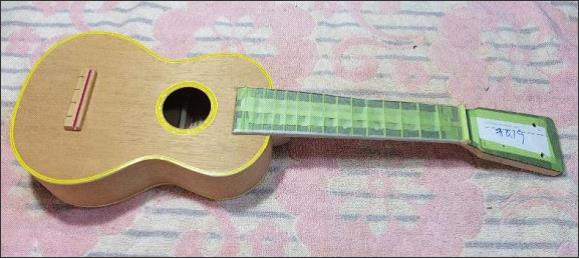 |
|
Before staining and coating, the whole body should be sanded with #180 to 400 grit papers. Every scratches and traces of glue on the body should be removed through sanding and scraping.
Mask some of the body unnecessary to stain such as fretboard, puflings and bindings, etc.
|
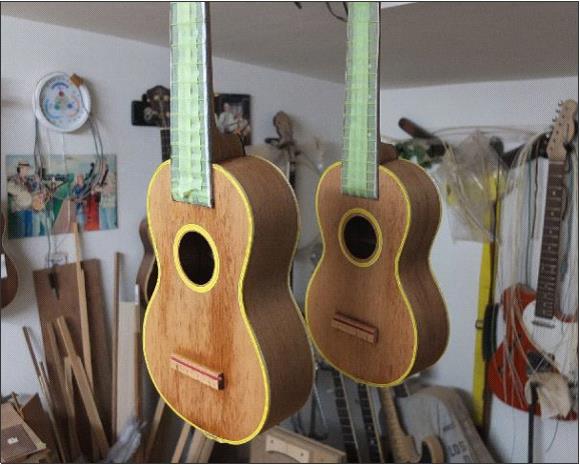 |
|
Now apply wash coat
to prevent staining irregularities. Thin down clear lacquer (Nitrocelllose Lacquer) adding three parts of lacquer thinner and brush it on the whole body.
After allowing overnight, lightly sand the body with #400 grit paper to remove some naps on the surface. |
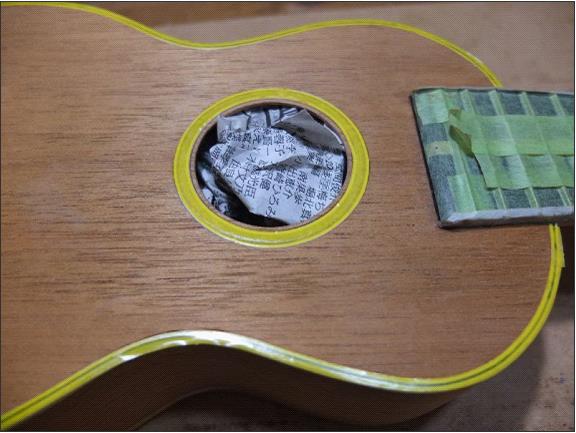 |
|
Stuff soundhole with crumpled paper to prevent coating from getting into inside the body. |
◆ Filling & Staining
|
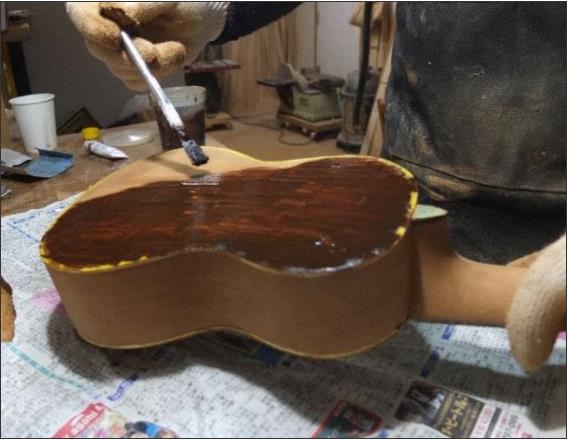 |
|
Next step is filling pores before applying top coat. Apply the stain together with paste filler at the same time.
A paste filler will be made as follows:
1. Talcum powder as a filler
2.
Oil colors (dark brown) as stain
3. Add lacquer thinner into 1. & 2. and mix them into a paste.
Brush on the body along the grains. |
 |
|
After the filler is half-dried, rub it with a cloth at right angles to the grains.
After dried,
wipe a filler off.
Do this filling process twice. Every remains of the filler should be taken away. |
◆ Sanding Sealer (Sealing)
|
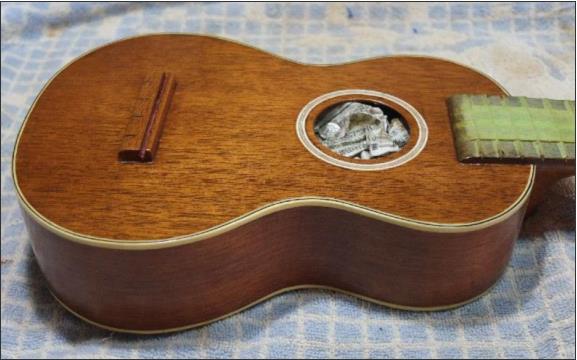 |
|
A sanding sealer should be used to make a first coat. It helps produce glasslike finish.
Remove all the masking tape but nut, fretboard and groove for saddle. Then mix sanding sealer with the same quantity of lacquer thinner.Do this process at least fifteen times and allow at least forty min between coating. |
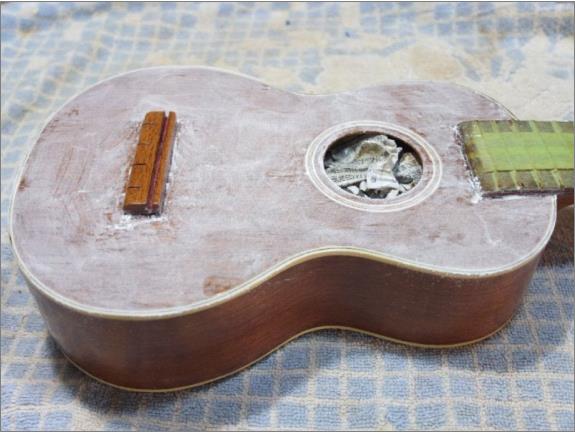 |
|
Sand down the laid sealer with #320 to #600 grit papers.
Be careful that too much sanding may partially expose the surface. If it happened this part must be started over from the beginning. |
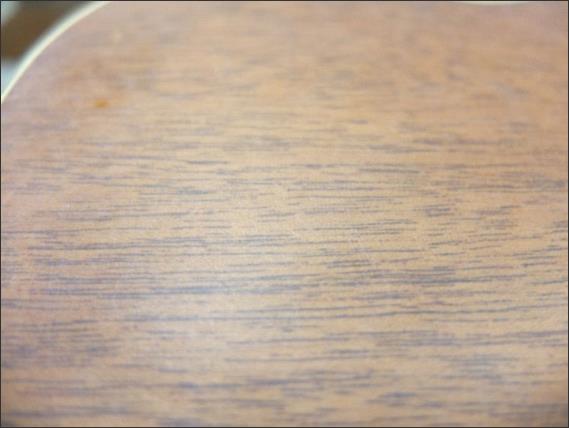 |
|
Check the result of sanding through the reflection on the surface. If a clear reflection without any dents is observed it will be acceptable.
Don't forget to remove the traces of sealer especially at joint area such as bridge, neckheel. |
◆ Top Coating
|
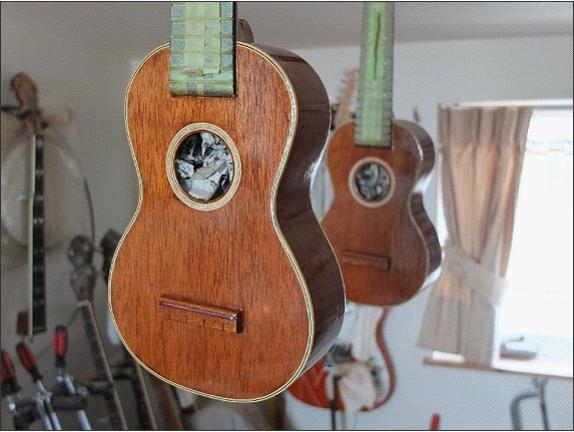 |
|
Thin down clear lacquer with the same quantity of thinner.
Do top coating completely in the same way as the process of sanding sealer. |
◆ Wet Sanding & Rubbing
|
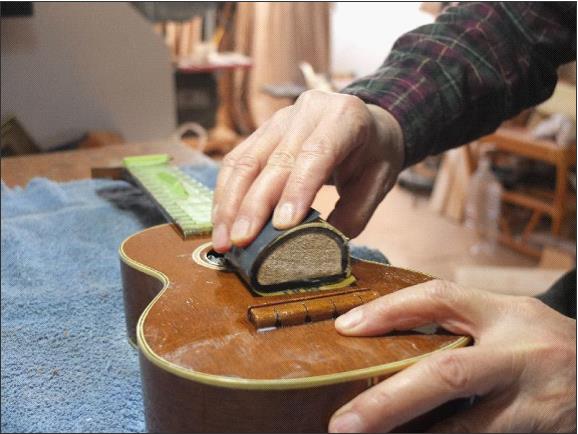 |
|
The sandpaper should be wet and lubricated with soap. Put a piece of soap in water. Wet sandpaper and lightly rub on the soap.
Sanding should be started with #800 grit paper and #1000, to #1500 as ending paper. |
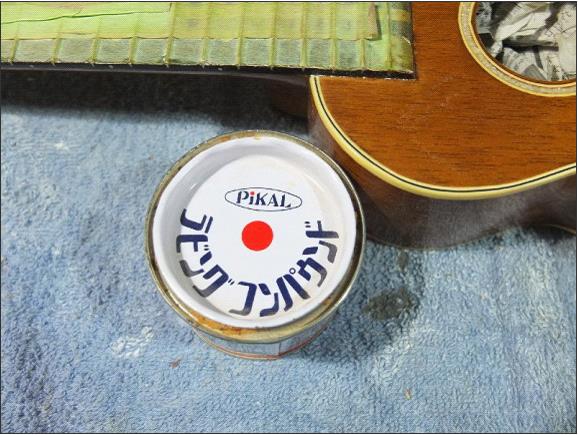 |
|
Remove every trace of coat and soap with waste after sanding.
Then apply compound wax for finish. Cotton cloth can be used for this hand rubbing. |
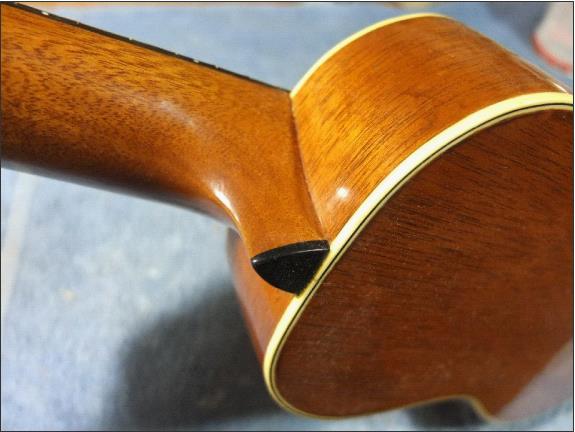 |
|
Shining body!!!! |
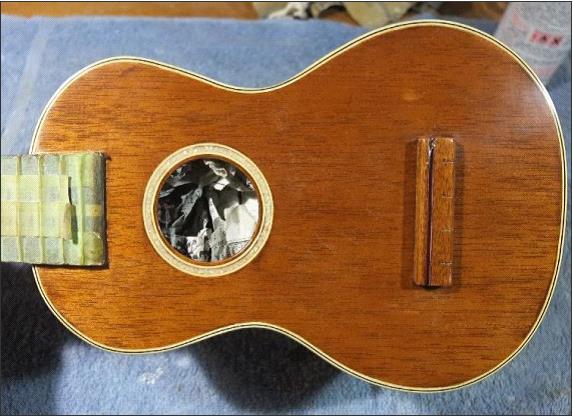 |
|
PIC shows masked fretboard, stuffed groove on the bridge and crumpled paper in the sound hole. |
